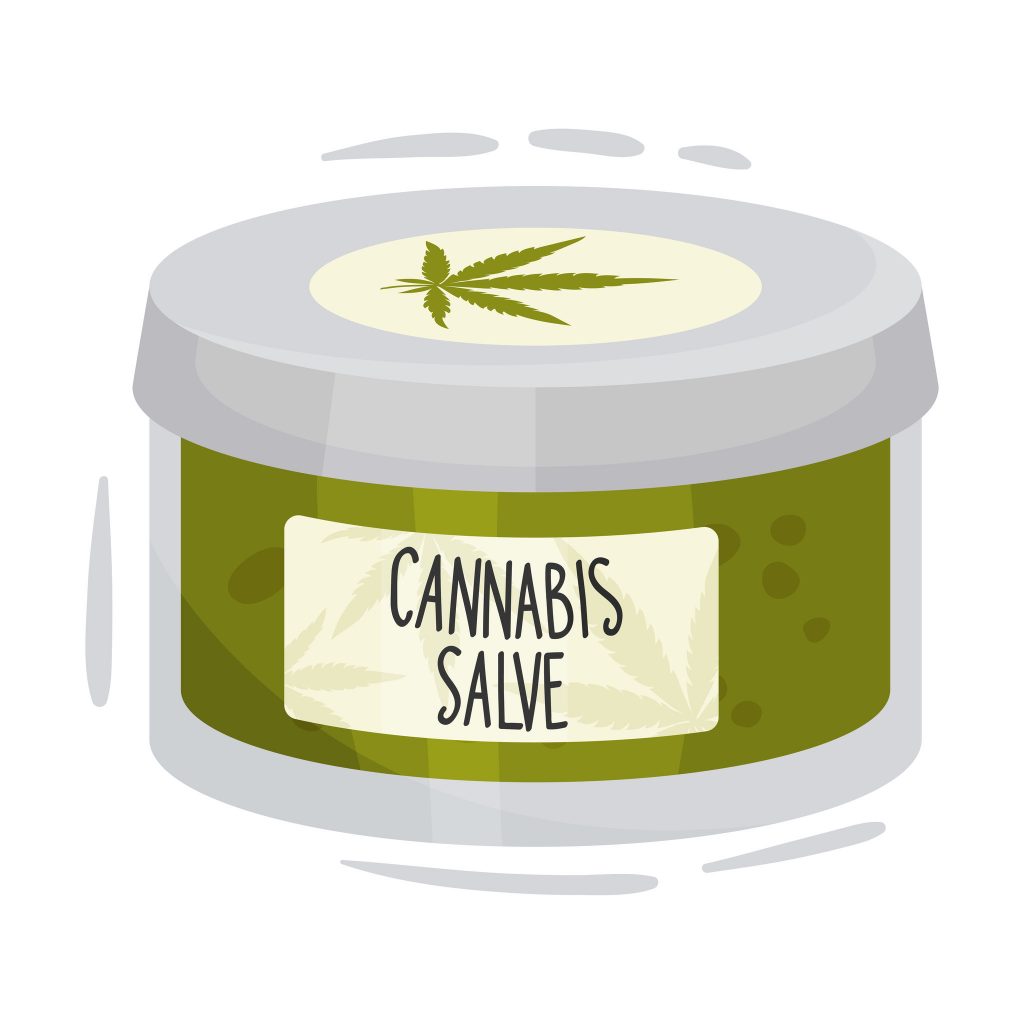Jake F. Felice, ND, LMP
Topical cannabis products are generally very well tolerated, and because they do not cause a head high, these products are often an ideal way to introduce patients to the therapeutic benefits of cannabis without causing the euphoria associated with other delivery methods. Topical cannabis products include infused lotions, balms, and oils that can be applied to the skin for localized relief of pain, soreness, itch, and inflammation. New transdermal innovations, including topical patches, are fast arriving in the cannabis market; however, despite company claims of reliable systemic absorption, there is a remarkable paucity of good data for these products, including pharmacokinetic plasma studies. Rather than discussing how to use topicals clinically, this paper focuses on what is currently known about bioavailability and mechanisms of action of topical cannabis products. It also discusses what is known about how topicals may affect various symptoms and conditions, and includes a review of the limited number of human studies and case reports in the peer-reviewed literature.
Bioavailability of Cannabis Topicals
For topical cannabinoid products to have biologic effects, the active ingredients must first enter the body and achieve appropriate concentrations. The most critical step in this process is the transfer of active constituents across the stratum corneum of the skin in order to reach underlying tissues.
Evidence of topical cannabinoid absorption is surprisingly limited. Skin permeation rates have been measured in experimental models of human skin.1 Plasma data from animal studies (by Paudel et al and Lodzki et al) also demonstrate topical penetration of cannabinoids into the animal bloodstream.2,3 The Lodzki study describes the ability of a topical ethosomal cannabinoid preparation to penetrate through the skin all the way through and into the underlying muscle tissue.3 According to the authors, this has important implications for the treatment of myositis. Relief of muscles soreness is one of the most commonly reported effects of topical cannabinoids, including tetrahydrocannabinol (THC) and cannabidiol (CBD). In a rodent model of muscular pain, topical CB1 and CB2 agonists reduced pain behaviors when applied peripherally.4
There exist a small number of human trials as well as numerous animal trials indicating clinical efficacy for cannabis topicals in non-skin-related conditions. Examples include a mouse model of multiple sclerosis (MS)5 and a small trigeminal neuralgia study in humans.6 Systemic effects derived from topical application can necessarily imply absorption. In one study, Liput et al reported that the transdermal delivery of CBD to mice reduced binge alcohol-induced neurodegeneration.7
Importantly, some cannabinoids have higher barriers to penetration than others. In animal models, for example, CBD has been shown to cross the skin barrier much more easily than delta-8-THC does, by a 10-fold factor.8 Additionally, CBD is more easily absorbed through skin compared to cannabinol (CBN), another common cannabinoid.8 Carrier ingredients in a product, such as ethanol, can enhance topical penetration across the skin.8 Additionally, and importantly, in animal models, a more concentrated topical has yielded better experimental results than those with lower cannabinoid content,7,9,10 suggesting that topical effects are concentration dependent.
Possible Mechanisms of Action
Evidence supports the role of cannabinoids in suppressing pain at peripheral, spinal, and supraspinal sites of action.9 This means that the reduction of pain signaling appears to be happening both inside the central nervous system (brain and spinal cord), as well as outside of it in the periphery, including the skin and underlying tissues. It is possible that the use of centrally acting cannabinoids could be combined with topicals to achieve additive or synergistic effects. Based on numerous anecdotal reports by patients, this appears to be happening clinically; patients widely report additive or synergistic effects when topical cannabis products are used in conjunction with other delivery methods, such as ingestion.
Potential pain- and itch-relieving mechanisms of action of topicals include actions at various receptors (eg, CB1 and CB2,4,9,11 NF-ĸB,12 adenosine,12 and TRPV112,13), as well as suppression of the endocannabinoid degrading enzyme, fatty acid amide hydrolase (FAAH).14 Interestingly, histamine-induced itching also appears to be relieved by a synthetic cannabinoid in human skin.15 Furthermore, topically applied THC was found in a mouse model to reduce contact inflammation by decreasing local inflammatory mediators.16 There exists the possibility of actions in other yet-to-be-identified areas.
Symptoms/Conditions
A limited number of animal studies and a few small human studies indicate potential effectiveness of cannabis topicals in various disease states, including models of MS,5 postherpetic neuralgia in humans,6 glaucoma,17 acne vulgaris,12,18,19 and inflammation and pain.9,16 Of particular note is the human study of trigeminal neuralgia,6 as well as the mouse study by Giacoppo et al.5 In the Giacoppo study, animals in an experimental MS model received topical cannabinoids. The paralyzed animals in this study recovered hind limb functionality among other relevant therapeutic gains.5 In a separate animal study, transdermal delivery of CBD reduced binge alcohol-induced neurodegeneration,7 an interesting therapeutic approach to the treatment of neurodegeneration via a topical.
Human Studies & Case Reports
In the peer-reviewed literature, the number of human studies conducted using topical cannabis is surprisingly small. A few are detailed here.
- Ideal pain relief for wound patients involves modalities that are topical, lack systemic side effects, and are noninvasive, self-administered, and rapid acting. Cannabis topicals fulfill all these categories and have been applied to wounds for thousands of years. In a small case study report, topical cannabis was associated with pain relief and reduced opioid use in 3 patients with pyoderma gangrenosum.20
- In humans, peripheral administration (including topical patch) attenuated histamine-induced itch.15
- In a small human study, topical therapy for facial postherpetic neuralgia, using a cannabinoid receptor agonist, was effective and well tolerated.6
Conclusion
Because they are generally very well tolerated and do not cause a head high, topical cannabis products remain an ideal choice to introduce patients to the therapeutic benefits of cannabis without the euphoria associated with other delivery methods. While it is apparent that more human research is needed to fully assess the potential benefits and limitations of the topical application of cannabinoids, this review suggests that there are good reasons for optimism that this mode of delivery will prove beneficial in the treatment of certain conditions and symptoms. As more patients gain access to high-quality topical preparations over the coming months, it will be important for health care providers to track the use, safety, and efficacy of topicals so that a body of case studies and real-world evidence can better inform future treatment options for both patients and physicians.
References:
- Challapalli PV, Stinchcomb AL. In vitro experiment optimization for measuring tetrahydrocannabinol skin permeation. Int J Pharm. 2002;241(2):329-339.
- Paudel KS, Hammell DC, Agu RU, et al. Cannabidiol bioavailability after nasal and transdermal application: Effect of permeation enhancers. Drug Dev Ind Pharm. 2010;36(9):1088-1097.
- Lodzki M, Godin B, Rakou L, et al. Cannabidiol-transdermal delivery and anti-inflammatory effect in a murine model. J Control Release. 2003;93(3):377-387.
- Sánchez Robles EM, Bagües Arias A, Martín Fontelles MI. Cannabinoids and muscular pain. Effectiveness of the local administration in rat. Eur J Pain. 2012;16(8):1116-1127.
- Giacoppo S, Galuppo M, Pollastro F, et al. A new formulation of cannabidiol in cream shows therapeutic effects in a mouse model of experimental autoimmune encephalomyelitis. Daru. 2015;23:48.
- Phan NQ, Siepmann D, Gralow I, Ständer S. Adjuvant topical therapy with a cannabinoid receptor agonist in facial postherpetic neuralgia. J Dtsch Ges. 2010;8(2):88-91.
- Liput DJ, Hammell DC, Stinchcomb AL, Nixon K. Transdermal delivery of cannabidiol attenuates binge alcohol-induced neurodegeneration in a rodent model of an alcohol use disorder. Pharmacol Biochem Behav. 2013;111:120-127. [Published correction appears in Pharmacol Biochem Behav. 2014;126:187-188].
- Stinchcomb AL, Valiveti S, Hammell DC, Ramsey DR. Human skin permeation of Δ 8 -tetrahydrocannabinol, cannabidiol and cannabinol. J Pharm Pharmacol. 2004;56(3):291-297.
- Dogrul A, Gul H, Akar A, et al. Topical cannabinoid antinociception: Synergy with spinal sites. Pain. 2003;105(1-2):11-16.
- Hammell DC, Zhang LP, Ma F, et al. Transdermal cannabidiol reduces inflammation and pain-related behaviours in a rat model of arthritis. Eur J Pain. 2016;20(6):936-948.
- Zhu CZ, Mikusa JP, Fan Y, et al. Peripheral and central sites of action for the non-selective cannabinoid agonist WIN 55,212-2 in a rat model of post-operative pain. Br J Pharmacol. 2009;157(4):645-655.
- Oláh A, Tóth BI, Borbíró I, et al. Cannabidiol exerts sebostatic and antiinflammatory effects on human sebocytes. J Clin Invest. 2014;124(9):3713-3724.
- Akopian AN, Ruparel NB, Jeske NA, et al. Role of ionotropic cannabinoid receptors in peripheral antinociception and antihyperalgesia. Trends Pharmacol Sci. 2009;30(2):79-84.
- Schlosburg JE, Boger DL, Cravatt BF, Lichtman AH. Endocannabinoid modulation of scratching response in an acute allergenic model: A new prospective neural therapeutic target for pruritus. J Pharmacol Exp Ther. 2009;329(1):314-323.
- Dvorak M, Watkinson A, McGlone F, Rukwied R. Histamine induced responses are attenuated by a cannabinoid receptor agonist in human skin. Inflamm Res. 2003;52(6):238-245.
- Gaffal E, Cron M, Glodde N, Tüting T. Anti-inflammatory activity of topical THC in DNFB-mediated mouse allergic contact dermatitis independent of CB1 and CB2 receptors. Allergy. 2013;68(8):994-1000.
- Fischer KM, Ward DA, Hendrix DV. Effects of a topically applied 2% delta-9-tetrahydrocannabinol ophthalmic solution on intraocular pressure and aqueous humor flow rate in clinically normal dogs. Am J Vet Res. 2013;74(2):275‐280.
- Tóth KF, Ádám D, Bíró T, Oláh A. Cannabinoid Signaling in the Skin: Therapeutic Potential of the “C(ut)annabinoid” System. Molecules. 2019;24(5):918.
- Eagleston LRM, Kalani NK, Patel RR, et al. Cannabinoids in dermatology: a scoping review. Dermatol Online J. 2018;24(6):13030/qt7pn8c0sb.
- Maida V, Corban J. Topical Medical Cannabis: A New Treatment for Wound Pain-Three Cases of Pyoderma Gangrenosum. J Pain Symptom Manage. 2017;54(5):732-736.

Jake F. Felice, ND, LMP, guides patients toward wellness by teaching them about their body’s own endocannabinoid system. He provides scientific, public relations, and product development advice for companies in emerging and existing cannabis markets. Dr Felice creates marketing content for his corporate clients, including CBD and cannabis webinars, videos, and category 1 CME courses for healthcare practitioners. He has consulted for major CBD, hemp, and cannabis companies, and is the founder at Cannabis Matrix Consulting. Dr Felice’s goal is to raise global awareness of the healing power of the body’s own endocannabinoid system. Find him at www.CannabisMatrix.com and www.DrJakeFelice.com.





